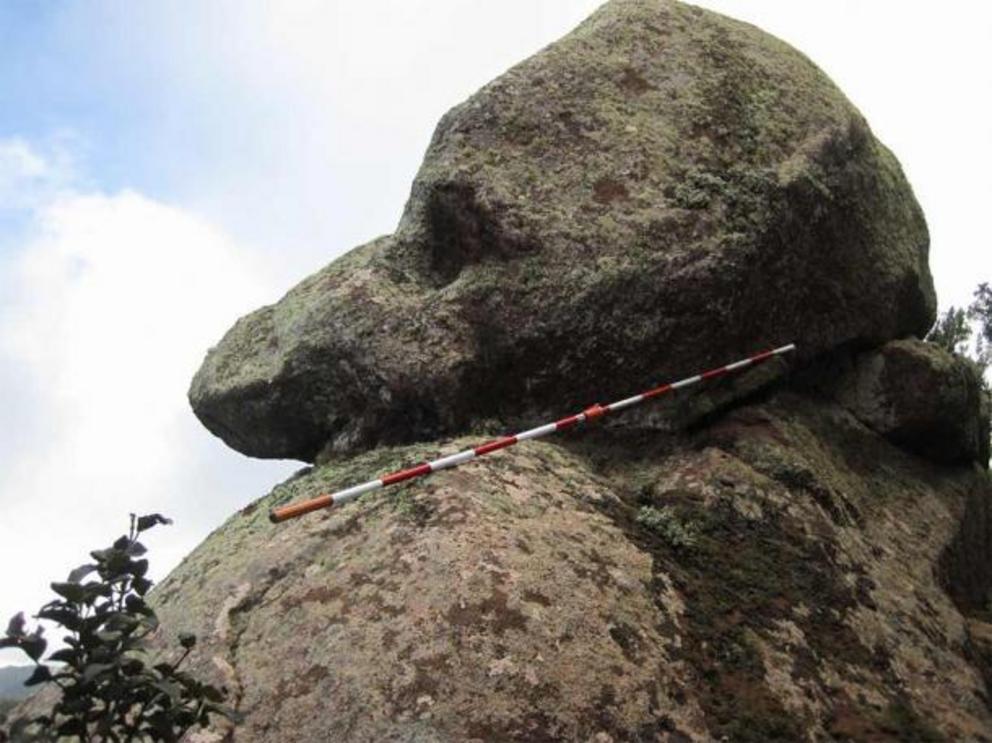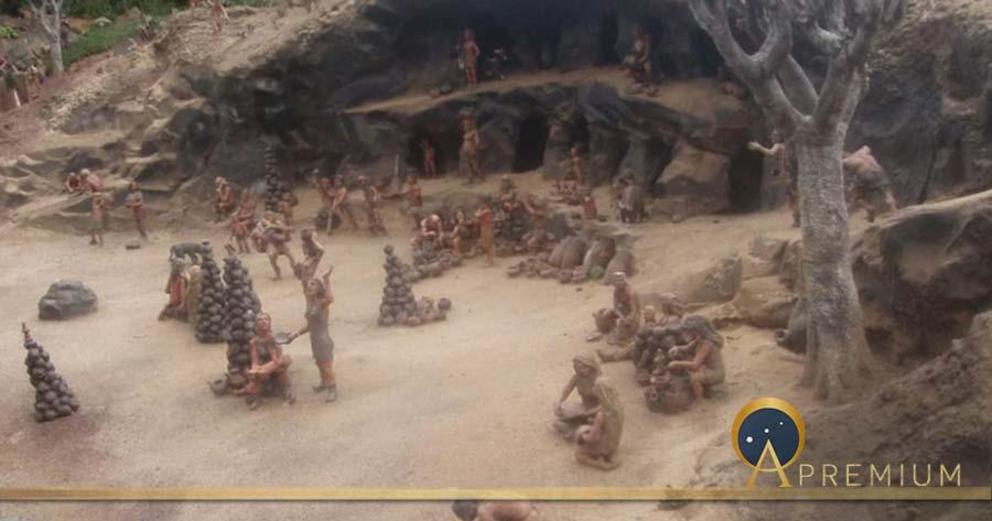Ancient Guanche solar worship and fertility rites in the Canary Islands
Top Image : Reconstruction of a Guanche settlement of Tenerife.
The Canarian laurel forest is a prehistoric forest about 20 million years old, present in many enclaves on the north coast of Tenerife. This wonderful and ancient forest formation treasures great botanical and archaeological jewels from the Canarian ancestors, the Guanches. Very close to the visible Mount Teide, a group of independent researchers have just found what could be considered a great Guanche meeting / worship center, associated with fertility rituals and sun monitoring. The space is made up of two large independent rock formations, in the middle of the pristine Canarian laurel forest. Both stone cliffs, several meters high, stand out as two stony sentinels in the middle of the ancient green sea of vegetation.
 Side view of the dog´s head rock. Note carved eye and canine (zoomorphic) profile
Side view of the dog´s head rock. Note carved eye and canine (zoomorphic) profile
The Dog’s Rock
The first of them powerfully draws attention to the huge stone monolith at its feet, a cyclopean block shaped like a head, or skull, of an animal (perhaps a dog) that defiantly gazes into the abyss. This first mountain sanctuary has been initially called ‘The dog´s rock’. The stone / head is about 3.5 meters (11.48 feet) long and 1.6 meters (5.25 feet) tall, has a carved eye and presents the typical canine profile, high skull and pointed snout. At the back there is a carved stone cup, a well differentiated concavity.
 The stone cups used in ritual ceremonies at the base of the dog´s head complex. These stone cups were used as milk or waters containers to “impregnate” Mother Earth.
The stone cups used in ritual ceremonies at the base of the dog´s head complex. These stone cups were used as milk or waters containers to “impregnate” Mother Earth.
The dog in Guanche society was an animal associated with burials since several dog mummified heads have been found together with human mummies in Tenerife´s sepulchral caves. These remains are common especially in mountainous areas. According to archaeologist Luis Diego Cuscoy the dog would be the soul´s guide into the afterlife. A meaningful notion that powerfully connects with ancient Egypt: The infamous god Anubis , equipped with a jackal / dog head, embalmed the bodies and guarded or guided the pharaoh´s soul on the journey to the world of the dead. The dog is a key element in all pastoral society, and was used for meat by some Guanches, surely in times of scarcity and only sporadically. Furthermore, Gran Canaria had the Tibisenas, spectral or demonic dogs, which frightened the ancient Canarians.
For the rest of this article please go to source link below.

